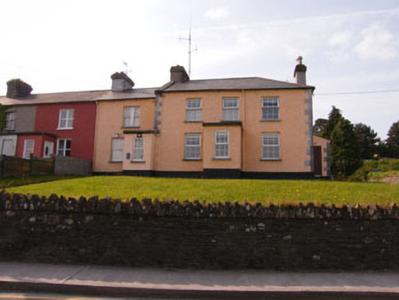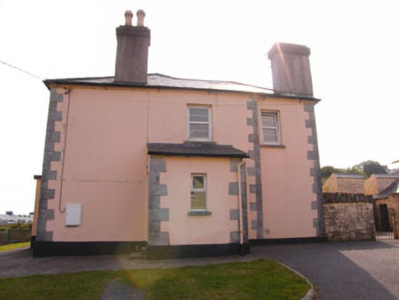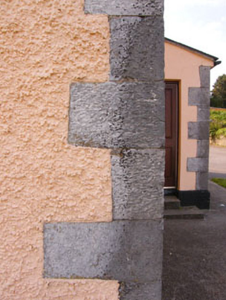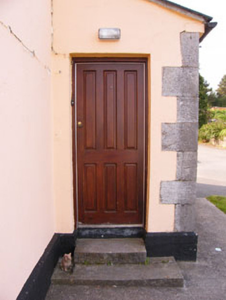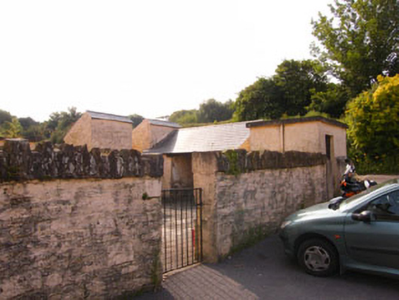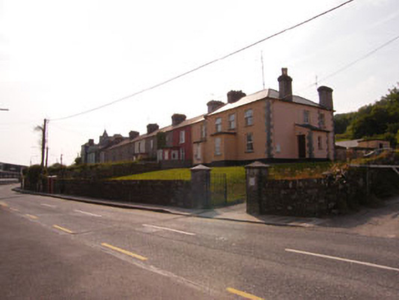Survey Data
Reg No
20848033
Rating
Regional
Categories of Special Interest
Architectural, Social
Original Use
Coastguard station
In Use As
Garda station/constabulary barracks
Date
1860 - 1865
Coordinates
179042, 61279
Date Recorded
05/06/2009
Date Updated
--/--/--
Description
End-of-terrace three-bay two-storey former coastguard officer's house, built 1864, now in use as Garda Station. Side-entry porches to front (north) and lean-to porch to side (west). Hipped slate roof with ashlar limestone gable copings, rendered chimneystacks, limestone eaves course and cast-iron rainwater goods. Roughcast rendered walls with rusticated limestone quoins, rendered plinths with rusticated limestone coping. Square-headed window openings with tooled limestone sills throughout, having uPVC casement windows. Replacement timber casement windows to side (west) porch and rear elevation of main block. Square-headed door openings having replacement timber battened and timber panelled doors with tooled limestone stepped approaches. Outbuildings to rear (south). Rubble limestone enclosing wall to front and side (west) of site having rubble stone coping, tooled limestone square-profile gate piers to front having pyramidal caps and double-leaf cast-iron gates.
Appraisal
Forming part of a long terrace, which comprises the former coastguard station, this group has played a significant role in the local maritime heritage. Set overlooking the sea, close to the road, it is notable feature. The length of the terrace indicates the number of men who were required to man the station, the more substantial end houses indicate the higher status of the officers in charge, while the watch tower is a reminder of the surveillance and defensive function of the station. The coastguard was armed and so was a potential weapons source for insurgents. The coastguard was established in 1831 as part of the customs service and became part of the Admiralty in 1857. Built in the 1860s, this coastguard station forms one of a number which were built in Cork harbour to monitor the movements of foreign warships, enforce custom and excise, and implement British law in the nineteenth and early twentieth centuries.

